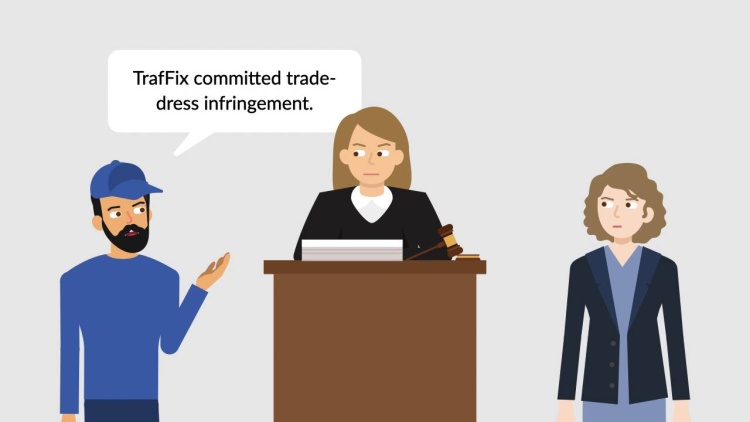TrafFix Devices, Inc. v. Marketing Displays, Inc.
United States Supreme Court
532 U.S. 23 (2001)
- Written by Patrick Busch, JD
Facts
Marketing Displays, Inc. (MDI) (plaintiff) held the utility patents for a device that used two springs to keep temporary road signs from blowing over in the wind. Soon after the patents expired, TrafFix Devices, Inc. (defendant) began selling signs that used an identical device that it had reverse-engineered from MDI’s product. MDI brought suit under the Trademark Act of 1946 (Lanham Act), alleging trademark infringement, trade dress infringement based on the use of the dual-spring design, and unfair competition. TrafFix counterclaimed on an antitrust theory. The district court entered summary judgment for MDI on the trademark infringement and antitrust claims, but found for TrafFix on the trade dress infringement claim. The district court reasoned that a trade dress claim was barred because the dual-spring design was not associated with MDI by consumers, and because the dual-spring design was a functional part of the products. TrafFix appealed to the court of appeals, which affirmed the district court on the trademark infringement and antitrust rulings, but reversed the dismissal of MDI’s trade dress claim against TrafFix. The court of appeals reasoned that trade dress protection was barred on the ground of functionality only when the protection would put competing manufacturers at a significant disadvantage that is not merely reputational. TrafFix then appealed the trade dress issue to the United States Supreme Court.
Rule of Law
Issue
Holding and Reasoning (Kennedy, J.)
What to do next…
Here's why 899,000 law students have relied on our case briefs:
- Written by law professors and practitioners, not other law students. 47,000 briefs, keyed to 994 casebooks. Top-notch customer support.
- The right amount of information, includes the facts, issues, rule of law, holding and reasoning, and any concurrences and dissents.
- Access in your classes, works on your mobile and tablet. Massive library of related video lessons and high quality multiple-choice questions.
- Easy to use, uniform format for every case brief. Written in plain English, not in legalese. Our briefs summarize and simplify; they don’t just repeat the court’s language.





